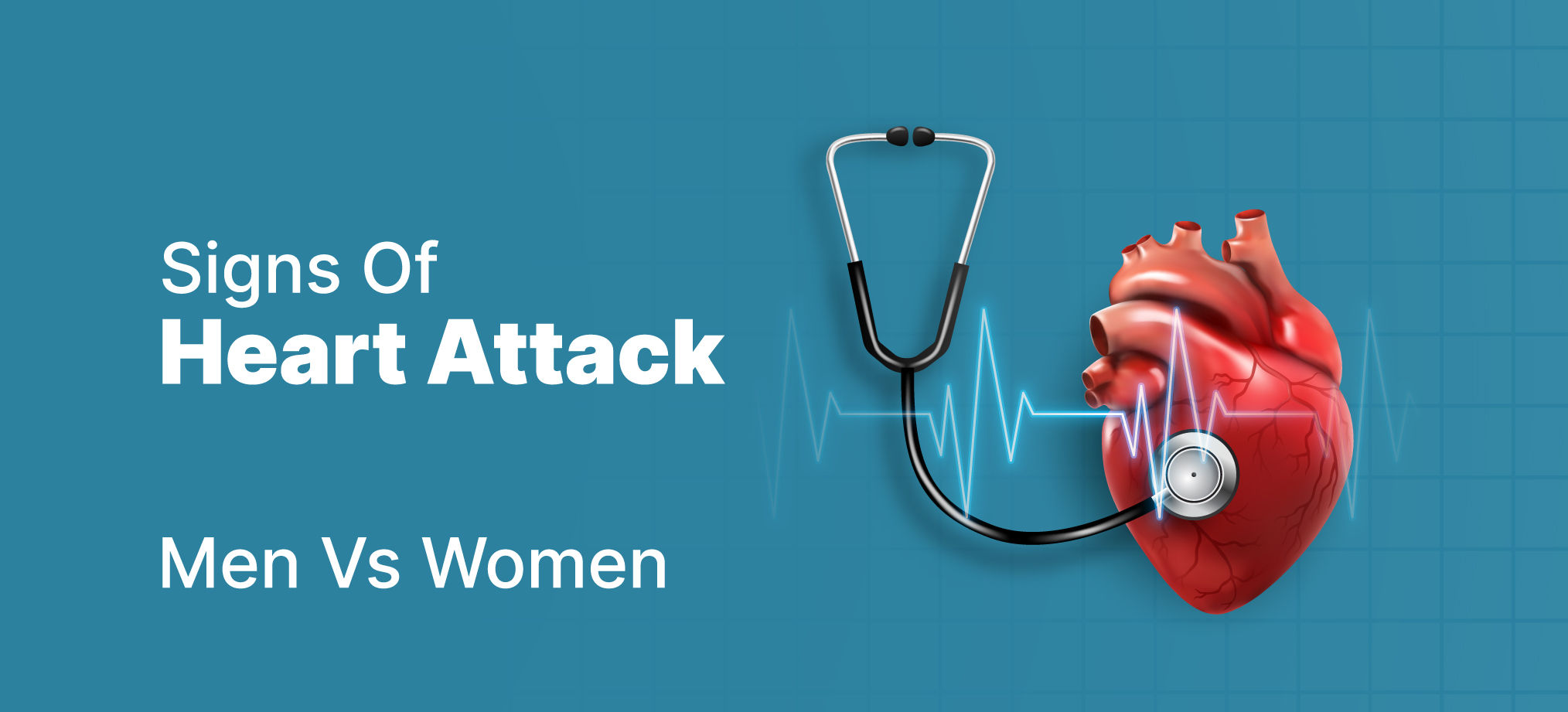Heart Conditions
Coronary Artery Disease: Symptoms, Cause, Diagnosis, Treatment, Prevention
8 min read
By Apollo 24|7, Published on - 16 August 2023, Updated on - 01 September 2023
Share this article
0
0 like

Did you know coronary artery disease (CAD) is the most commonly reported heart condition across the globe? CAD, also known as coronary heart disease or ischemic heart disease, occurs when the arteries that supply blood to the heart become narrowed or blocked due to the build-up of plaque. This can result in reduced blood flow to the heart muscle, leading to symptoms such as chest pain or discomfort, shortness of breath, fatigue, and even heart attack. Understanding the symptoms, causes, diagnosis, treatment, and prevention of CAD is crucial for maintaining heart health and preventing serious complications.
Symptoms of Coronary Artery Disease
Coronary artery disease is a common heart condition that can have serious consequences if left untreated. Recognizing the symptoms is crucial for early diagnosis and treatment. Here are some key symptoms to be aware of:
- Chest pain (angina): This is the most common symptom of coronary artery disease. This pain may feel like pressure, squeezing, or heaviness in the centre of the chest. It often occurs during physical activity or emotional stress and typically subsides with rest.
- Shortness of breath and fatigue: When the heart's blood supply is compromised due to narrowed arteries, it becomes harder for the heart to pump oxygen-rich blood to the body. This can lead to feelings of breathlessness and fatigue, even with minimal exertion.
- Other potential symptoms: In addition to chest pain and shortness of breath, coronary artery disease can also cause other symptoms such as dizziness, nausea, sweating, or a racing heartbeat.
Causes and Risk Factors
The primary cause of CAD is atherosclerosis, which occurs when fatty deposits, cholesterol, and other substances accumulate in the arteries, leading to their narrowing or blockage. The narrowing of the coronary arteries restricts blood flow to the heart, resulting in CAD.
The risk factors associated with CAD include:
- Unhealthy diet and obesity: A diet high in saturated fats, cholesterol, and sodium contributes to plaque formation. Obesity, especially excess abdominal fat, increases the risk of developing CAD.
- Lack of physical activity: Inactivity can lead to weight gain, high blood pressure, diabetes, and unhealthy cholesterol levels, all of which contribute to CAD.
- Smoking and tobacco use: Chemicals in tobacco smoke damage blood vessels and accelerate plaque formation.
- High blood pressure: High blood pressure puts extra strain on the arteries, making them more susceptible to damage and narrowing.
- High cholesterol levels: Elevated levels of LDL (bad) cholesterol can lead to plaque accumulation in the arteries.
- Diabetes mellitus: Diabetes increases the risk of CAD due to its association with insulin resistance, high blood sugar levels, and inflammation.
- Age and gender: Age increases the likelihood of developing CAD, with men being at higher risk than women.
- Family history and genetics: Having a close family member with CAD significantly increases your risk.
Diagnosis of Coronary Artery Disease
Diagnosing CAD involves a thorough evaluation of a patient's medical history, a physical examination, and various diagnostic tests and procedures. Your doctor will ask you about your symptoms, family history, and any previous medical conditions you may have had. This is followed by a physical examination, which involves to checking the heart sounds and blood pressure.
To confirm the diagnosis of CAD, several imaging tests and procedures may be conducted. These include:
- Electrocardiogram (ECG): An ECG measures the electrical activity of your heart. It can detect abnormal heart rhythms and provide information about the blood supply to your heart.
- Stress testing (Exercise ECG or Stress Echocardiography): Stress testing evaluates how well your heart functions during physical activity. It helps identify any blockages in the coronary arteries that may cause reduced blood flow to the heart.
- Cardiac imaging (Echocardiography or Nuclear Imaging): These tests use ultrasound or radioactive tracers to create images of your heart. They can assess the structure and function of your heart, helping identify areas with reduced blood supply.
- Coronary angiography: Coronary angiography is an invasive procedure that involves injecting contrast dye into your coronary arteries and taking X-ray images. It provides detailed information about the location and severity of blockages in the arteries.
Treatment Options for Coronary Artery Disease
Depending on the severity of the condition, lifestyle modifications, medications, and invasive procedures or surgeries may be recommended. Let's take a closer look at each treatment option:
1. Lifestyle Modifications
- Healthy Diet Recommendations: It is important to focus on a diet that is low in saturated and trans fats, cholesterol, and sodium. Incorporating more fruits, vegetables, whole grains, legumes, and lean proteins can be beneficial.
- Regular Physical Activity Recommendations: Regular exercise is vital for cardiovascular health. Even small changes like taking regular walks or opting for active modes of transportation can make a significant difference.
- Smoking Cessation Guidance: Quitting smoking is essential for reducing the risk of CAD progression. You may seek professional help, such as counselling or nicotine replacement therapy.
2. Medications for CAD Management
- Antiplatelet Agents: Medications like aspirin and clopidogrel are commonly prescribed to prevent blood clots from forming in the arteries and reduce the risk of heart attacks.
- Cholesterol-Lowering Medications: Statins are widely used to lower cholesterol levels and decrease the risk of plaque build-up in the arteries.
- Blood Pressure Medications: ACE inhibitors and beta-blockers help control high blood pressure, reducing the strain on the heart and preventing further damage to blood vessels.
3. Invasive Procedures and Surgeries for CAD
- Percutaneous Coronary Intervention (Angioplasty and Stenting): This minimally invasive procedure involves widening narrowed or blocked coronary arteries using a balloon catheter and placing stents to help keep the arteries open.
- Coronary Artery Bypass Grafting (CABG): In severe cases of CAD, CABG may be recommended. It involves creating alternative routes for blood flow by using grafts to bypass blocked arteries.
- Emerging Technologies and Treatments: New technologies such as bioresorbable stents and robotic-assisted surgeries offer promising alternatives for managing CAD.
Prevention of Coronary Artery Disease
Coronary artery disease can be prevented by:
1. Healthy Lifestyle Promotion
- Maintaining a healthy weight: Excess weight puts strain on the heart, increasing the risk of CAD. Focus on consuming a balanced diet, rich in fruits, vegetables, whole grains, and lean proteins, while limiting the intake of saturated and trans fats.
- Recommendations for a heart-healthy diet: Opt for traditional dishes prepared with less oil and spices. Include foods like lentils, whole grains, fruits, and vegetables in your daily meals.
- Regular physical activity: Aim for at least 150 minutes of moderate-intensity aerobic exercise or 75 minutes of vigorous-intensity exercise per week. Incorporate activities like brisk walking, jogging, cycling, or dancing into your routine.
- Smoking cessation strategies: Quitting smoking can greatly reduce the risk of developing heart disease.
2. Managing Risk Factors
- Blood pressure control: Monitor your blood pressure regularly and follow your healthcare provider's recommendations to keep it within a healthy range. You can also monitor your BP in the comfort of your home with BP monitors.
- Cholesterol management: Adopt a heart-healthy diet and consider medication if necessary to manage cholesterol.
- Diabetes management: Monitor blood sugar levels, follow a diabetic-friendly diet, and take prescribed medications to keep diabetes under control. You can also monitor your blood sugar levels in the comfort of your home with glucose monitors.
3. Regular Check-ups and Screenings
Regular check-ups and screenings are crucial for the early detection of any potential heart problems. Follow your healthcare provider's recommendations for routine blood tests, lipid profile test, and electrocardiograms (ECGs). These screenings can help identify risk factors or signs of CAD at an early stage, allowing for timely intervention and treatment.
Conclusion
Although coronary artery disease is a common heart condition, there are several ways to prevent it, including lifestyle modifications such as quitting smoking, eating a healthy diet low in saturated fat and cholesterol, exercising regularly, and managing stress. Furthermore, regular check-ups are equally essential for monitoring heart health and making necessary adjustments to treatment plans.
To ensure the well-being of your heart,
FAQs
Q. Can alcohol result in coronary artery disease?
Excessive alcohol consumption, stress, and certain autoimmune diseases can also increase your risk of developing CAD.
Q. Are symptoms of coronary artery disease similar for men and women?
Women may experience different symptoms compared to men, such as indigestion, discomfort or fatigue.
Q. Is coronary artery disease hereditary?
While genetics can play a role in predisposing individuals to CAD, it is not solely determined by your family history. Lifestyle factors like diet and exercise significantly contribute to the development of CAD.
Q. Can coronary artery disease be prevented?
Yes. By adopting a heart-healthy lifestyle you can prevent or delay the onset of CAD, which includes regular exercise, eating a balanced diet low in saturated fats and cholesterol, managing stress levels, and avoiding smoking and excessive alcohol consumption.
Q. Are there any new advancements in CAD treatment?
Minimally invasive procedures like angioplasty and stenting have replaced traditional open-heart surgery in many cases. Additionally, there are now medications available that can help reduce cholesterol levels and slow down the progression of CAD.
Medically reviewed by Dr Sonia Bhatt.
Heart Conditions
Consult Top Cardiologists
View AllLeave Comment
Recommended for you

Heart Conditions
Heart Blockage: Symptoms, Causes, Diagnosis, Treatment and Prevention
Learn all about heart blockage, including its symptoms, causes, diagnosis, treatment and prevention. Stay informed and take steps to protect your heart health.

Heart Conditions
Do You Know Men & Women Display Different Symptoms To These 6 Cardiovascular Diseases?
This article highlights the common symptoms of six heart diseases in men and women. According to various reports, the most common symptoms in each of these conditions may vary between men and women over time.

Heart Conditions
Why You Should Regularly Check Your Blood Pressure at Home
Both high and low blood pressure can be extremely dangerous and can result in serious health consequences. Therefore, it is crucial to monitor blood pressure frequently.
Subscribe
Sign up for our free Health Library Daily Newsletter
Get doctor-approved health tips, news, and more.
Visual Stories

World Heart Day 2021: Take charge of your health
Tap to continue exploring
Recommended for you

Heart Conditions
Heart Blockage: Symptoms, Causes, Diagnosis, Treatment and Prevention
Learn all about heart blockage, including its symptoms, causes, diagnosis, treatment and prevention. Stay informed and take steps to protect your heart health.

Heart Conditions
Do You Know Men & Women Display Different Symptoms To These 6 Cardiovascular Diseases?
This article highlights the common symptoms of six heart diseases in men and women. According to various reports, the most common symptoms in each of these conditions may vary between men and women over time.

Heart Conditions
Why You Should Regularly Check Your Blood Pressure at Home
Both high and low blood pressure can be extremely dangerous and can result in serious health consequences. Therefore, it is crucial to monitor blood pressure frequently.
